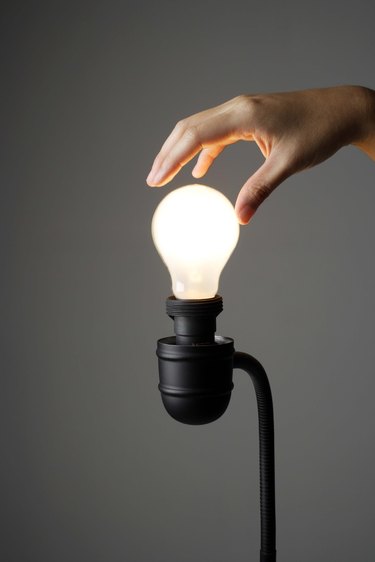 Electrical ballasts lose energy due to heat loss. Image Credit: Jupiterimages/Goodshoot/Getty Images
Electrical ballasts lose energy due to heat loss. Image Credit: Jupiterimages/Goodshoot/Getty Images
Ballasts limit electrical current in electrical devices such as fluorescent lights. However, they lose energy when they operate because of the way that they are constructed. Ballasts are basically copper wire in a coil shape that is wrapped around iron. As such, they create heat because they cause electrical resistance to alternating current as it makes its way through the circuit.
Size
Not all ballasts will lose the same amount of electrical energy. The amount of energy lost is related to the size of the ballast's key components, the iron core and the coil. The greater the size, the more potential for loss of energy. However, this is often proportional to the type of light being used and is generally expressed as a percentage of loss. No consensus exists regarding a standard percentage loss, but a 36-watt light using a standard ballast will lose about 25 percent of its energy.
Low-Loss Ballasts
Some ballasts are specifically designed to eliminate excess loss of energy. For instance, in some nations, such as Canada, limits are put on the amount of allowable energy lost through the ballast. Some companies have developed low-loss ballasts that operate at just a fraction of what a traditional ballast operates and loses. For instance, a 36-watt low-loss ballast will only lose 4 watts as opposed to 9 watts lost by non-energy efficient ballasts.
Magnetic vs. Electronic
The amount of energy lost through an electronic ballast is significantly less than that lost through a magnetic ballast. Lights that use 39 to 175 watts of energy will lose between 14.6 and 37.6 watts of energy when used with a magnetic ballast, according to the Lawrence Berkeley National Laboratory. By comparison, an electronic ballast with the same lights will only lose between 5.2 and 15.2 watts, a savings of 9.4 to 22.4 watts.
Frequency
Electronic ballasts also come in high- and low-frequency models. The frequency refers to the number of electrical pulses per second that the ballast consumes. A low-frequency ballast will use 120 pulses per second and will lose significantly less energy. A high-frequency ballast will use more than 10,000 pulses per second and can have a higher energy loss as a result. However, these ballasts do help boost light performance because the increased amount of pulses accounts for the energy lost through the ballast.


